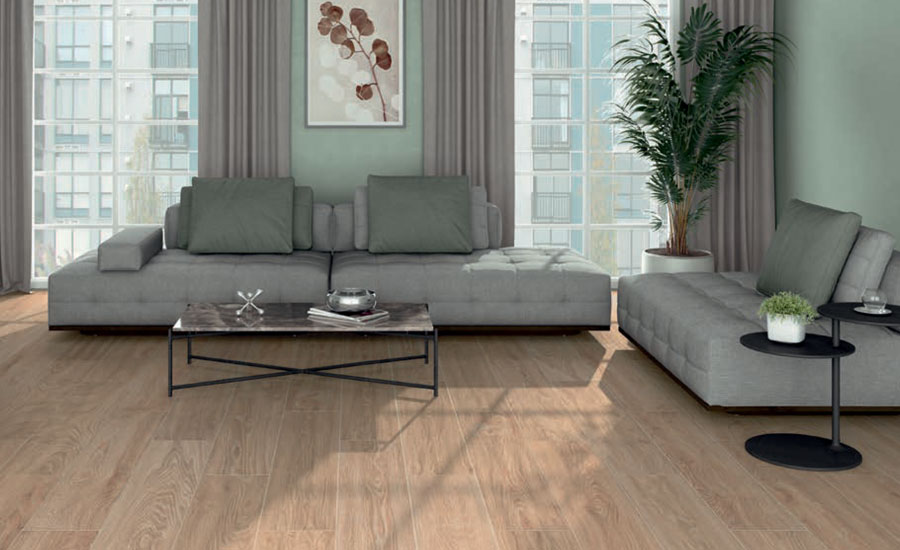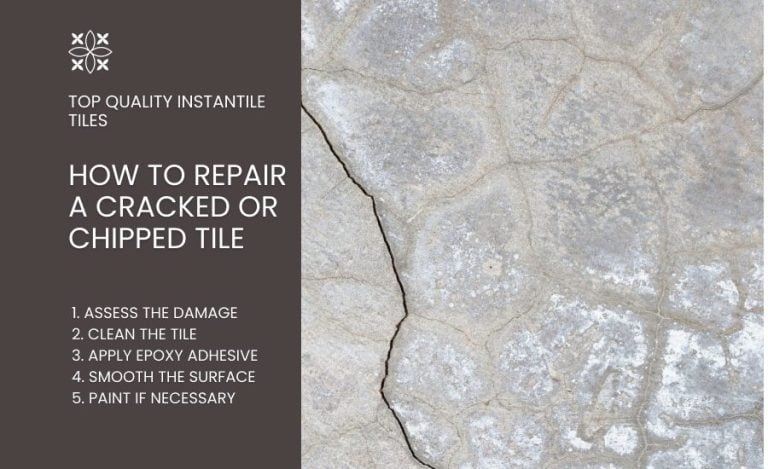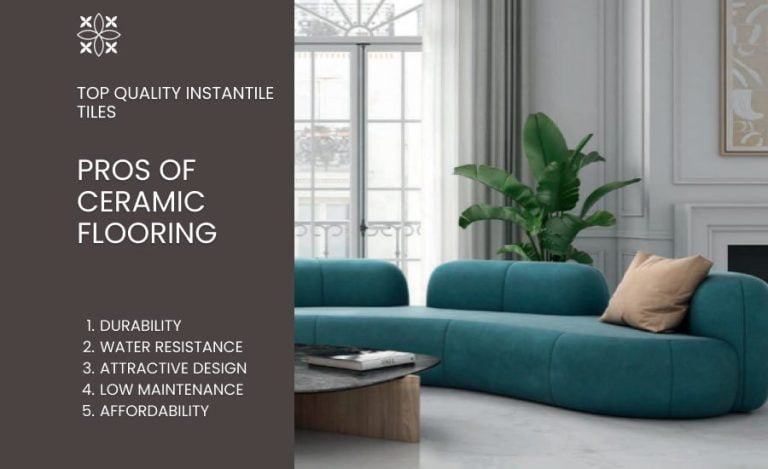Eco-Friendly Tiles: Key Takeaways
- Sustainable tiles combine recycled materials with energy-efficient manufacturing to reduce environmental impact
- Companies driving the eco-friendly movement are embracing innovations like recycled materials, water recycling systems, and energy-efficient
- Choose sustainable tiles that minimizes environmental impact and enhances your design
Homeowners are prioritizing sustainability, with more than a third of U.S. consumers seeking to cut energy costs in their homes.
This proves that going green isn’t just smart, it’s essential.
By embracing sustainable practices, architects, builders, and homeowners can significantly reduce their carbon footprint, conserve natural resources, and contribute to healthier indoor environments.
In this article, we will:
- Explore how eco-friendly tiles help cut carbon emissions
- Discover the best sustainable tiles for homes and businesses
- Uncover what you should look for in eco-friendly tile options
How Eco-Friendly Tiles Reduce Carbon Footprint
Sustainable tile options incorporate recycled materials and use energy-efficient manufacturing techniques. Companies leading the eco-friendly movement often implement:
- Recycled waste: Many tiles are now made with post-consumer or post-industrial waste, reducing landfill contributions.
- Water recycling systems: Advanced water filtration methods allow for significant wastewater reduction.
Energy-efficient kilns: Innovations in low-temperature firing reduce emissions while maintaining durability.
Best Eco-Friendly Tile for Homes & Businesses
In 2024, more homeowners are choosing eco-friendly home upgrades, and it’s reshaping the market.
As interest in home décor grows, so does the demand for sustainable materials and organic design. That includes tile.
Choosing the right sustainable tile means considering both environmental impact and design aesthetics.
Here are some of the most eco-friendly options available:
Recycled Tiles
Recycled glass tiles are made from discarded bottles and industrial glass waste, reducing landfill accumulation. These tiles come in vibrant colors and can be used in bathrooms, kitchens, and outdoor spaces.
Recycled ceramic and porcelain tiles incorporate factory waste into new designs, lowering material consumption while maintaining the high durability that builders and homeowners seek.
Natural Stone & Clay Tiles
Terracotta tiles, made from natural clay, offer a rustic aesthetic while being biodegradable and locally sourced.
Slate and limestone tiles are naturally occurring, require minimal processing, and have a longer lifespan than synthetic alternatives.
Low-VOC Tiles for Improved Indoor Air Quality
Volatile organic compounds (VOCs) can affect indoor air quality and cause allergies and respiratory issues.
Low-VOC or VOC-free tiles are often made from materials like porcelain, ceramic, or natural stone, paired with specialized low- or zero-VOC glazes and adhesives to limit off-gassing.
Choosing low-VOC tiles ensures a healthier environment, especially in homes with reduced airflow and commercial spaces where air quality is a priority.
Sustainable Tiles: What To Look For
Manufacturing Method
Manufacturers now use solar-powered kilns, heat recovery systems, and low-emission firing techniques to reduce the tile production environmental footprint. Brands that adhere to ISO 14001 standards practice eco-friendly manufacturing.
Water Recycling in Tile Manufacturing
Water recycling in tile manufacturing refers to the process of reclaiming and reusing water used in production, significantly reducing consumption and waste.
By implementing advanced filtration and purification techniques, responsible manufacturers can lower their environmental impact and improve efficiency.
Here are three key innovations in water recycling for tile manufacturing:
- Closed-loop water recycling systems: These systems continuously treat and reuse water within the production process, reducing reliance on freshwater sources.
- Sedimentation tanks: These separate solid particles from wastewater, allowing clean water to be recirculated while minimizing contamination.
- Biological treatment facilities: Using natural bacteria and filtration methods, these facilities help break down and remove harmful substances from wastewater before reuse.
Green Certifications
When selecting eco-friendly tiles, look for industry-recognized certifications such as:
- LEED (Leadership in Energy and Environmental Design): Recognizes buildings and materials that meet high sustainability standards.
- ISO 14001: Certifies that the manufacturer follows environmentally responsible production methods.
- Cradle to Cradle Certification: Ensures that products are safe, circular, and responsibly made.
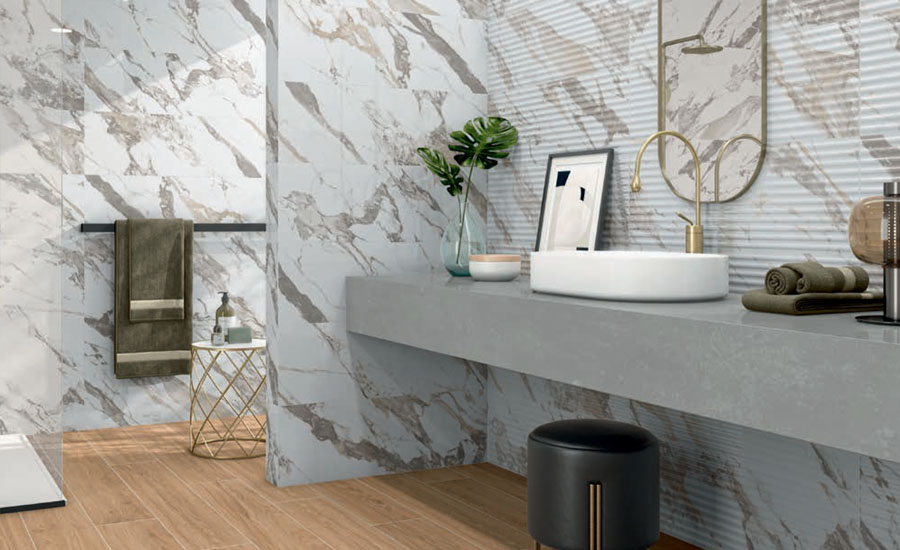
Ceramista’s Interlocking Ceramic Tiles vs. Traditional Tiles
Traditional tile installations have long been the standard practice and require the use of adhesives and grout to fill gaps. Let’s take a look at some of this method’s environmental drawbacks.
Traditional Grout Tile Installations
- Susceptible to grout discoloration, mold, and bacteria buildup over time.
- Difficult to remove or replace, leading to higher renovation waste.
- Longer installation times and increased use of chemicals in adhesives.
Ceramista Interlocking Ceramic Tiles
Ceramista redefines tile installation with our innovative INSTANTILE interlocking system, allowing you to complete the job up to nine times faster than traditional methods.
- Quick and efficient setup — minimizing both energy and labor costs
- No grout required, reducing material waste and eliminating harmful chemicals
- Easily removable and reusable, supporting sustainable renovations
- Produced in a solar-powered facility, reducing our overall carbon footprint
- Available in designs that replicate natural wood and stone, providing a sustainable alternative to resource-intensive materials
For environmentally conscious projects, Ceramista’s grout-free, interlocking tile solutions offer a smarter, more sustainable approach to flooring.
The Eco-Friendly Benefits of Ceramista’s Ceramic Tiles
At Ceramista, we take sustainability seriously, ensuring our ceramic tiles are both stylish and environmentally responsible. Our commitment to green manufacturing includes:
- Reduced material waste: No need for excess grout or adhesives, minimizing unnecessary landfill contributions.
- Easier installation: Fewer energy and labor requirements, making it an ideal eco-conscious option.
- Reusability: Interlocking tiles can be removed and reinstalled, reducing the need for new materials in renovations.
- Design versatility: Available in wood-look and stone-look finishes, our tiles offer a durable and sustainable alternative to at-risk natural materials.
Ceramista chooses solar-powered manufacturing, as it promotes:
- Sustainable production: Our tiles are manufactured in a solar-powered facility, significantly reducing carbon emissions.
- Lower energy consumption: Solar energy helps cut reliance on fossil fuels, making our tile production one of the most eco-friendly in the industry.
- Certified green standards: Our commitment to sustainability aligns with LEED and ISO 14001 guidelines.
How To Incorporate Sustainable Tiles Into Your Design
Integrating eco-friendly tiles into a project requires careful planning. Here’s how to make the most of them:
Best Applications: Kitchens, Bathrooms, Outdoor Spaces
- Kitchens: Opt for recycled glass backsplashes or ceramic tiles with water-resistant coatings.
- Bathrooms: Use natural stone or terracotta tiles for a spa-like aesthetic.
- Outdoor Spaces: Choose porcelain or reclaimed stone for patios, pool areas, or facades.
Combining Sustainability With Luxury & Style
Eco-friendly doesn’t mean sacrificing design. Many brands now offer high-end, customizable options that combine sustainability with premium aesthetics.
Cost vs. Long-Term Savings: Is It Worth It?
While the upfront cost of sustainable tiles may be slightly higher, the long-term savings on energy bills, maintenance, and replacements make them a cost-effective investment.
If you’re looking to redecorate, explore our Spanish design trends for stylish and sustainable design.
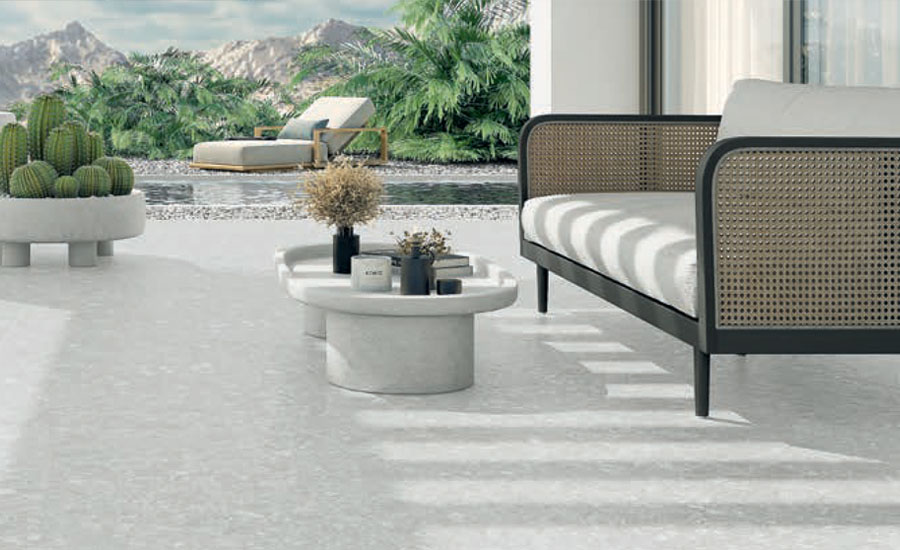
Why Choose Ceramista for Your Eco-Friendly Tile Needs?
At Ceramista, we are committed to providing high-quality, sustainable tile solutions that align with environmentally responsible practices.
Ceramista provides an all-in-one product that meets your needs for easy installation, style, durability, and certified green materials.
Our innovative interlocking tiles reduce installation time by up to nine times compared to traditional methods, with a range of designs that mimic wood, steel, and stone.
Frequently Asked Questions
What makes a tile eco-friendly?
Eco-friendly tiles are made from sustainable materials, such as recycled glass, ceramic, or porcelain, and are manufactured using low-energy processes.
Are recycled tiles as durable as traditional tiles?
Yes, recycled tiles undergo rigorous testing to ensure they are just as strong and long-lasting as conventional options.
Do eco-friendly tiles cost more than conventional options?
While some sustainable tiles have a higher upfront cost, they often provide long-term savings due to durability and energy efficiency.
What certifications should I look for when buying sustainable tiles?
Look for LEED, ISO 14001, and Cradle to Cradle certifications to ensure your tiles meet environmental standards.
Can sustainable tiles be used for outdoor applications?
Absolutely! Many eco-friendly tiles, including porcelain and reclaimed stone, are designed for outdoor durability.
How do low-VOC tiles improve indoor air quality?
Low-VOC tiles eliminate harmful emissions, making indoor spaces healthier and allergy-friendly.
What’s the difference between recycled and reclaimed tiles?
Recycled tiles are made from post-consumer waste, while reclaimed tiles are salvaged and repurposed without extensive reprocessing.
Are eco-friendly tiles easier to maintain?
Yes, many sustainable tiles are stain-resistant and low-maintenance, requiring only basic cleaning.
Can I install sustainable tiles myself?
Many eco-friendly tiles, such as click-together tiles, are DIY-friendly, while others may require professional installation.
Where can I find the best eco-friendly tile options?
You can explore options from Ceramista and other sustainable tile outlets offering high-quality sustainable tile solutions.
